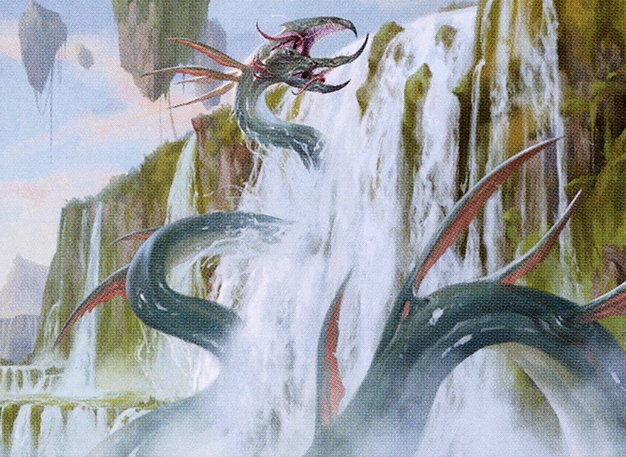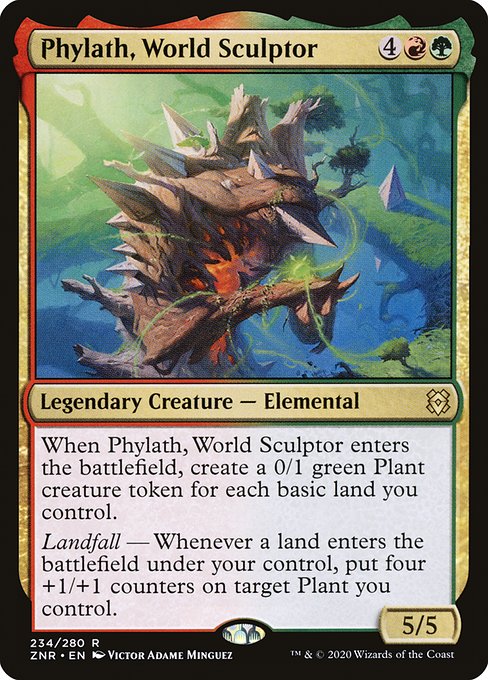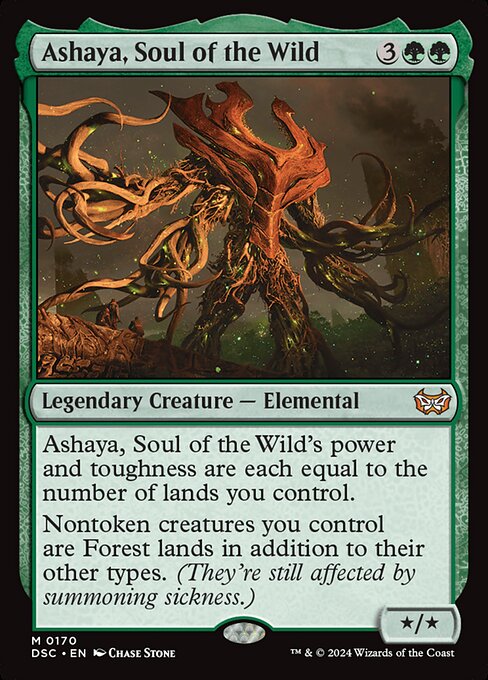Deck & Commander Strategies

Verazol, the Split Current
Utilizes kicker spells to draw cards and generate value by copying kicked spells, eventually winning through overwhelming card advantage and spell doubling.

Phylath, World Sculptor
Leverages landfall and plant tribal synergies to grow creatures quickly and dominate the battlefield with enhanced plant tokens and landfall triggers.

Yasharn, Implacable Earth
Plays a green-white hatebear style deck focused on disruption and fair combat tools to slow opponents down and control the pace of the game.

Ashaya, Soul of the Wild
Turns all creatures into forests, enabling massive ramp and repeated landfall triggers to combo off and generate powerful board states.
Gameplay Insights
- 1
Verazol’s ability to remove counters to copy kicked spells creates a unique engine that turns normally weak kicker spells into powerful finishers.
- 2
Phylath’s landfall synergy combined with plant tribal tokens creates a rapid board presence that can overwhelm opponents if not checked early.
- 3
Yasharn’s hatebear approach, while disruptive, can struggle in a meta with explosive ramp and combo decks that create large board states quickly.
- 4
Ashaya’s mechanic of turning creatures into lands enables repeated landfall triggers, which synergizes exceptionally well with ramp and landfall effects to build advantage.
- 5
Players had to carefully consider mass land destruction effects, as Ashaya’s strategy depends heavily on creatures also functioning as lands.
- 6
The diversity of strategies highlighted the strengths and weaknesses of mono and multi-color decks in handling ramp, disruption, and combo potential.
Notable Cards
-

Verazol, the Split Current
-

Phylath, World Sculptor
-

Yasharn, Implacable Earth
-

Ashaya, Soul of the Wild
-

Rite of Replication
Gameplay Summary
The game began with each player piloting unique Zendikar Rising commanders, setting the stage for diverse strategies.
Verazol, the Split Current, focused on leveraging kicker spells to generate card advantage and eventually win by doubling the effects of kicked spells.
Phylath, World Sculptor, aimed to build a plant tribal synergy with landfall triggers, creating a board presence that could grow large quickly.
Yasharn, Implacable Earth, took a more hatebear-oriented approach, aiming to disrupt opponents with efficient creatures and tactics despite lacking blue's typical control tools.
Ashaya, Soul of the Wild, turned all creatures into forests, enabling massive ramp and landfall synergies to combo off and generate overwhelming value, especially with budget constraints moderating its power level. Key turning points included Verazol's incremental value from kicker spells, which began to pressure opponents with card advantage and copy effects.
Phylath's plant tribal strategy allowed for significant board growth, leveraging landfall to strengthen creatures and generate threats rapidly.
Yasharn's hatebear package proved disruptive but struggled to keep pace with the explosive ramp and value engines on the table.
Ashaya's ability to transform creatures into lands and trigger landfall repeatedly proved a powerful engine, enabling combos and synergy that threatened to end the game if unchecked.
The interplay between landfall triggers and creature-land duality was central to the gameplay, with board wipes and targeted removal shaping the tempo.
Ultimately, the game showcased the diversity of Zendikar Rising commanders and their distinct approaches to controlling and winning the board.

























![Phylath vs Lord Windgrace v Queen Marchesa vs Yuriko [EDH Gameplay] 2020 thumbnail](https://i.ytimg.com/vi/R2rq4ZbY4xQ/sddefault.jpg)
![Atraxa vs Animar vs Akiri vs Phylath [EDH Gameplay] 2020 thumbnail](https://i.ytimg.com/vi/NmsmeZRZM68/sddefault.jpg)







![Kari Zev RDW vs. Yasharn Hatebears [Duel Commander-EDH] - Magic: The Gathering thumbnail](https://i.ytimg.com/vi/PWqkg1DH-LE/sddefault.jpg)
![Esior & Ludevic vs. Yasharn Hatebears [Duel Commander-EDH] - Magic: The Gathering thumbnail](https://i.ytimg.com/vi/KLBeHYVot1w/sddefault.jpg)





